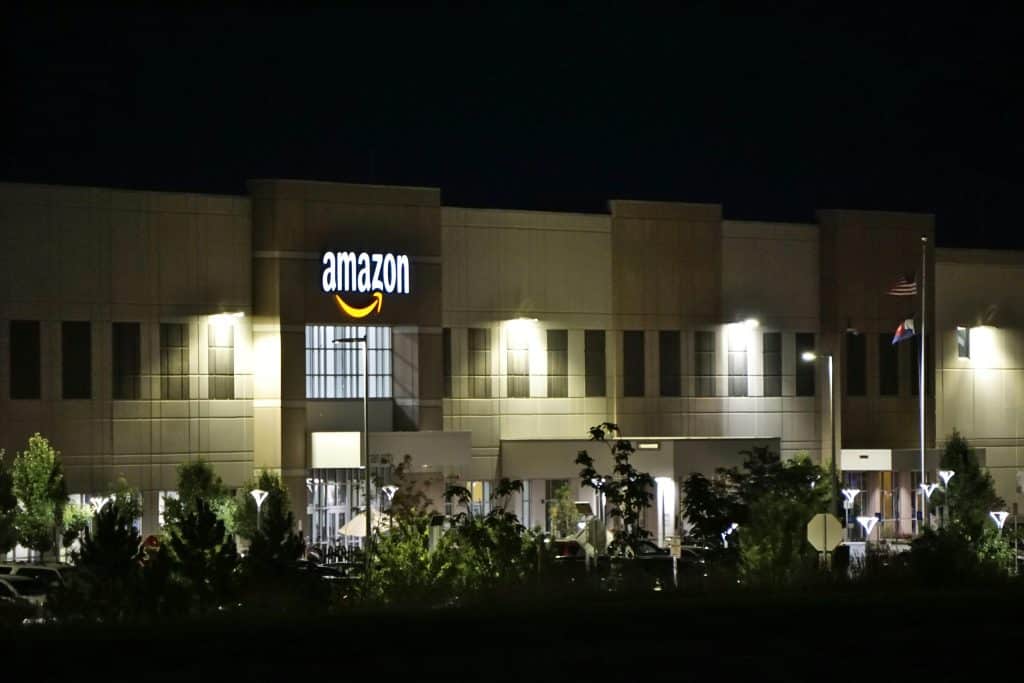Amazon Terms of Service | How to Stay Compliant
Amazon terms of service have undergone many changes in 2025. Click here to ensure compliance and avoid potential issues.
There’s a reason why so many sellers choose to sell on Amazon. The average independent seller earned $290,000 annually, with the bigger names earning significantly more.
While selling on Amazon has its perks, eCommerce store owners also have many responsibilities. For example, the marketplace has clear terms of service that sellers must abide by.
These terms vary from inventory management to packaging your items, they are constantly changing, and keeping up can be strenuous.

Amazon Terms of Service in 2025
Amazon’s terms of service may change for various reasons, such as to offer greater transparency and to meet current customer demands. Here are the latest changes to Amazon’s terms of service in 2025.
Packaging for Sharp Products
While Amazon’s packaging requirements haven’t changed drastically, they have updated their policies on packaging sharp products and those with pointed ends.
The most significant change is how Amazon offered prep services, but they no longer do. All store owners who sell sharp-pointed products are responsible for their own packaging.
For FBA sellers, this means your sharp objects must be in compliant and shipment-ready packaging when they arrive at Amazon warehouses.
All sharp objects must be packaged in puncture-resistant packaging, such as blister packs or hardened plastic. Failure to comply will result in immediate disposal of items without eligibility for reimbursement.
While this isn’t listed in the policies, companies selling sharp objects should include proper warnings and product compliance documentation to avoid any injuries.
FBA Damaged or Lost Inventory Reimbursement
If a customer’s order has been lost or damaged, they receive a refund based on the selling price. But what if the item was lost or damaged before the order was placed?
Previously, Amazon handled refunds for sellers in the same manner ― if an item were lost or damaged during transit to the warehouses, Amazon would refund the item’s sales price.
However, this method isn’t always practical. For example, manufacturers must consider the production and supply chain costs, and refunding the selling price may not cover those expenses.
Now, if an item is lost or damaged during transit, Amazon will refund all manufacturing costs to sellers, except shipping and handling charges. Sellers can enter manufacturing costs directly; if they don’t, Amazon will use an estimate based on competing or similar products.

New Stolen Goods Policy
Amazon’s marketplace has more impersonated businesses than its competitors. As a result, Amazon continually updates its fraud protection to stay ahead of the latest scams and attacks.
Amazon’s latest policy change is how it handles the sale of stolen goods. While Amazon always investigated sketchy sellers and listings, it now has an individual Stolen Goods Policy that all sellers must abide by.
To stay compliant, sellers must disclose the details of their supply chain. It’s also best to adhere to all Amazon quality standards to demonstrate that your products are unique and of the highest quality. If you don’t abide by this policy, Amazon may revoke your selling privileges.
Related content: How to Use Amazon Transparency
MCF Program Data Processing
Amazon’s multi-channel fulfillment (MCF) service is a convenient option for sellers who operate on multiple eCommerce marketplaces. The MCF program enables sellers to utilize Amazon as their primary fulfillment method, even when they sell on other platforms.
Amazon introduced this program in 2007, and they’re constantly updating and improving it. The latest addition is their Data Processing Addendum (DPA). This DPA specifically addresses processing personal information.
Low-Cost Store Program
The low-cost store program is what it sounds like ― a program for eCommerce companies selling items for $20 or less. However, this program is undergoing two significant changes:
- The program is now called Amazon Haul
- Amazon expanded the countries in which this program is available
If you’re already enrolled in Amazon Haul, there are no additional actions to take. However, it’s essential to note that you can now sell in the new countries Amazon has added.
Seller-Fulfilled Prime and Premium Shipping Program
Seller-Fulfilled Prime (SFP) is a convenient program that enables eCommerce companies to handle their own shipping while remaining eligible for Prime. However, Amazon is making changes to this program.
Under the new SFP, Amazon will require all sellers to complete a trial. Amazon will give you three attempts to pass in one calendar year, excluding any major sales events (such as the holidays and Prime Day).
What if you’re already enrolled in Seller-Fulfilled Prime? You don’t need to pass this trial, but there are additional changes to know:
- If you don’t ship 100 SFP packages in one month, Amazon will restrict your maximum Prime daily order limit.
- Amazon will revoke your program membership if you receive two warnings for not meeting shipping performance standards.
- If you misclassify any products, Amazon may pause or revoke your Prime eligibility.
- Any disruptions from major network carriers (such as natural disasters) will not affect your Prime eligibility.
- As long as you ship your parcels on time, you’ll receive One-Time Delivery Rate protection.
- Sellers can submit an appeal two weeks after receiving a warning or revocation email.
Remote Fulfillment Return Credits
Remote Fulfillment is one of the best ways for sellers to expand to different countries. With this program, sellers can make their US-based inventory available to Mexico, Canada, and Brazil, without storing products in these nations. Plus, they will still be eligible for Prime shipping.
But what happens if an international customer returns an item? How can sellers cover the return fees? Fortunately, Amazon is offering return credits to sellers. This ensures you pay the same fees across all marketplaces, regardless of the country.
How to Stay Compliant
Sellers should review each of these changes and make any necessary changes to comply with the Amazon terms of service. That said, there are general best practices that all sellers must follow:
- Update packaging. Even if you don’t sell sharp objects, puncture-resistant packaging ensures your products arrive with minimal damage and are easier for Amazon workers to pick and pack. If necessary, coordinate with your packaging providers or suppliers.
- Review costs. Many of these policy changes cover returns, shipping, and FBA or Prime programs. All these come with costs, and sellers should review them closely to ensure selling on Amazon isn’t eating into profits.
- Educate your team. Since noncompliance carries serious consequences, it’s best to involve your entire team. Inform your staff and any third-party suppliers, manufacturers, or logistics teams of the updated Amazon policies that will affect your company.
- Monitor deadlines. Some of these new policies, such as Seller-Fulfilled Prime trials, come with deadlines. Monitor these deadlines to stay on top of any responsibilities that Amazon needs from you.
If you’re still stuck, you can also seek help from a trusted Amazon consultant.
Are You Struggling to Keep Up?
As the world’s largest marketplace, the Amazon terms of service for sellers is strict and all companies must adhere to it. That said, there are always changes to these conditions, and it can be challenging to keep up.
If you’re struggling to keep up, we can help. With our Accelerator Program, we provide strategic guidance and support on all things Amazon-related, complete with weekly meetings to ensure you stay up-to-date.
Author
 Stephanie Jensen has been writing ecommerce content for seven years, and her copy has helped numerous stores rank on Amazon. Follow her on LinkedIn for more insight into freelance writing and creating high-quality content.
Stephanie Jensen has been writing ecommerce content for seven years, and her copy has helped numerous stores rank on Amazon. Follow her on LinkedIn for more insight into freelance writing and creating high-quality content.
The post Amazon Terms of Service | How to Stay Compliant appeared first on AMZ Advisers.


